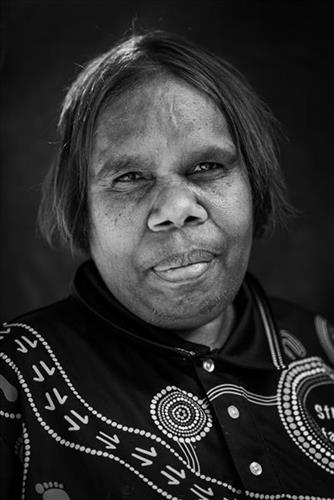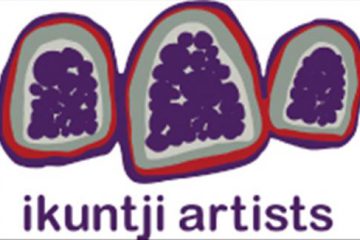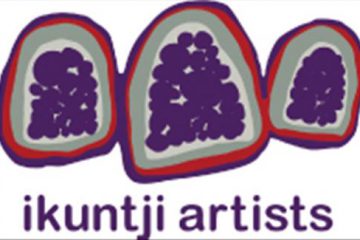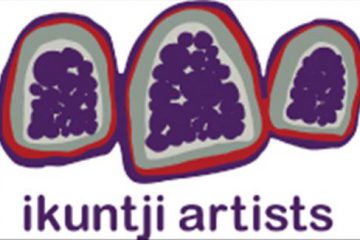220282371096
Bush Tucker
“The background is the outback red sand. It’s my mother’s father’s Country in Yaya-yii. West of Papunya and east of Mount Leibig. Where that creek runs along. The painting talks about inside and outside of bush tucker. The white is bush banana, Ipalu, there’s the two oval shape, one is outside (plain, green), Ipalu, and the inside part (white). There’s Pangkuna. They have stringy leaves and a long curvy pod. Inside there’s the round bean, the pangkuna bush bean with the seed, you can eat that one when you cook the whole pod by laying it in the fire for a few minutes and then taking it out. There’s the three round circles, the akatjiri. When it’s green, you can’t eat that. Only when it’s yellow or brown. Brown tastes like sultana. Yellow taste like cherry tomato. And the tree, it’s got blue leaves, but it’s green leaves in real life. It’s called yawalyurru. It’s got a seed on it, it’s like a blueberry. There’s the yellow heart shape, it’s a pura, it tastes like rockmelon. Inside there’s black seeds. It’s like a pawpaw, you cut the seed, clean it and eat it. But it tastes like rockmelon. The orange, it’s kaliny-kalinypa. I zoomed it in to explain it, its like a grevillia. Long time ago people used to travel on a hot day, they would see all these grevillia on the road, they would tap it on the lips and suck it or chew it for the moisture, and to salivate. The round brown shape with the long leaves is yalka, bush onion. Long time ago people used to go collect yalka, bush onion. It’s found near the lakes, that’s where they grow. The two colours is the opened yalka, inside. The round circles is the bush coconut, wanpanpi. When you go hunting you can collect these, it’s in a tree like a gum tree. They use that tree for Sorry Business. As you can see the orange and dark/light blue with the leave is arrngali, bush cherry. It’s got seeds on it. It’s in three colours, when it’s black you can eat it, but red is not ready yet.” – Joyce Dixon



